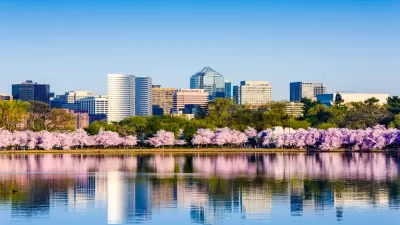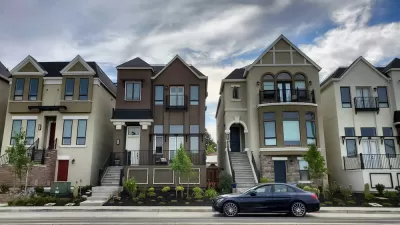The massive federal injection of funding into housing programs has had major impacts on many Americans’ ability to stay housed and out of debt, but fears loom as the end of some funding sources nears.

Writing in Route Fifty, Molly Bolan outlines the results of pandemic-era federal housing investment distributed through the American Rescue Plan Act revealed in a report from the Treasury Department.
Overall, state and local governments have dedicated roughly $63 billion to housing programs and spent about 85 percent of the funds. “State and local governments have spent over $5.5 billion in Homeowner Assistance Funds to help nearly 400,000 households avoid foreclosure, and overall foreclosures nationwide are 13% below pre-pandemic levels.”
When it comes to renters, federal programs have funded over 12.3 million household payments and helped create eviction diversion and mediation programs.
The significant benefits of housing assistance signal the high level of need, prompting concern among advocates as these federal programs come to an end or run out of funds. Bolan points out that some states and cities are developing their own dedicated funding sources to extend housing assistance programs.
FULL STORY: By the numbers: How pandemic relief expanded affordable housing

Maui's Vacation Rental Debate Turns Ugly
Verbal attacks, misinformation campaigns and fistfights plague a high-stakes debate to convert thousands of vacation rentals into long-term housing.

Planetizen Federal Action Tracker
A weekly monitor of how Trump’s orders and actions are impacting planners and planning in America.

In Urban Planning, AI Prompting Could be the New Design Thinking
Creativity has long been key to great urban design. What if we see AI as our new creative partner?

Pedestrian Deaths Drop, Remain Twice as High as in 2009
Fatalities declined by 4 percent in 2024, but the U.S. is still nowhere close to ‘Vision Zero.’

King County Supportive Housing Program Offers Hope for Unhoused Residents
The county is taking a ‘Housing First’ approach that prioritizes getting people into housing, then offering wraparound supportive services.

Researchers Use AI to Get Clearer Picture of US Housing
Analysts are using artificial intelligence to supercharge their research by allowing them to comb through data faster. Though these AI tools can be error prone, they save time and housing researchers are optimistic about the future.
Urban Design for Planners 1: Software Tools
This six-course series explores essential urban design concepts using open source software and equips planners with the tools they need to participate fully in the urban design process.
Planning for Universal Design
Learn the tools for implementing Universal Design in planning regulations.
planning NEXT
Appalachian Highlands Housing Partners
Mpact (founded as Rail~Volution)
City of Camden Redevelopment Agency
City of Astoria
City of Portland
City of Laramie





























